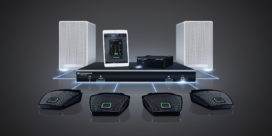infrastructure
5 infrastructure concerns for district technology leaders
The growing need for more internet bandwidth is being pushed by an increase in the number of students with devices, according to CoSN's Annual Infrastructure Survey. Increases in…
How this state is turning its virtual teachers into online learning experts
A certification program is creating a new generation of online learning savants. How are they doing it?
Sennheiser adds audio conferencing solution, TeamConnect with wireless or ceiling mics
Sennheiser’s TeamConnect is an end-to-end, professional-grade conferencing solution for medium to large conference rooms. TeamConnect can be integrated into any infrastructure or conference room to deliver leading-edge connectivity…
Follett acquires ClassBook
Follett announced it has acquired ClassBook, a K-12 education online bookstore that serve schools, teachers, parents, and students. ClassBook provides private and parochial schools with 24/7 bookstores, streamlining…
Does your school have a growth mindset when it comes to change?
Want your tech rollout to be successful? First, you need the right mindset Most educational organizations want to improve teaching ... Read more
Do schools have the infrastructure to implement the Common Core?
How long can students stare at a frozen screen before their minds wander off? How long can they wait for a webpage to load during testing before losing…
How 4 states are gearing up for online assessments
As the 2014-2015 school year approaches, Common Core-adopting states are working to develop and implement the online assessments that go along with the new core standards. Along with…






